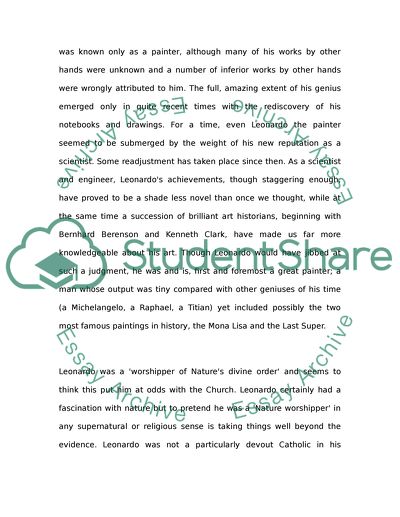Cite this document
(“Leonardo Da Vinci - a Worshipper of Nature's Divine Order Essay”, n.d.)
Leonardo Da Vinci - a Worshipper of Nature's Divine Order Essay. Retrieved from https://studentshare.org/visual-arts-film-studies/1519569-humanities-essay-over-dm-fields-leonardo-di-vinnci-2002
Leonardo Da Vinci - a Worshipper of Nature's Divine Order Essay. Retrieved from https://studentshare.org/visual-arts-film-studies/1519569-humanities-essay-over-dm-fields-leonardo-di-vinnci-2002
(Leonardo Da Vinci - a Worshipper of Nature'S Divine Order Essay)
Leonardo Da Vinci - a Worshipper of Nature'S Divine Order Essay. https://studentshare.org/visual-arts-film-studies/1519569-humanities-essay-over-dm-fields-leonardo-di-vinnci-2002.
Leonardo Da Vinci - a Worshipper of Nature'S Divine Order Essay. https://studentshare.org/visual-arts-film-studies/1519569-humanities-essay-over-dm-fields-leonardo-di-vinnci-2002.
“Leonardo Da Vinci - a Worshipper of Nature'S Divine Order Essay”, n.d. https://studentshare.org/visual-arts-film-studies/1519569-humanities-essay-over-dm-fields-leonardo-di-vinnci-2002.


